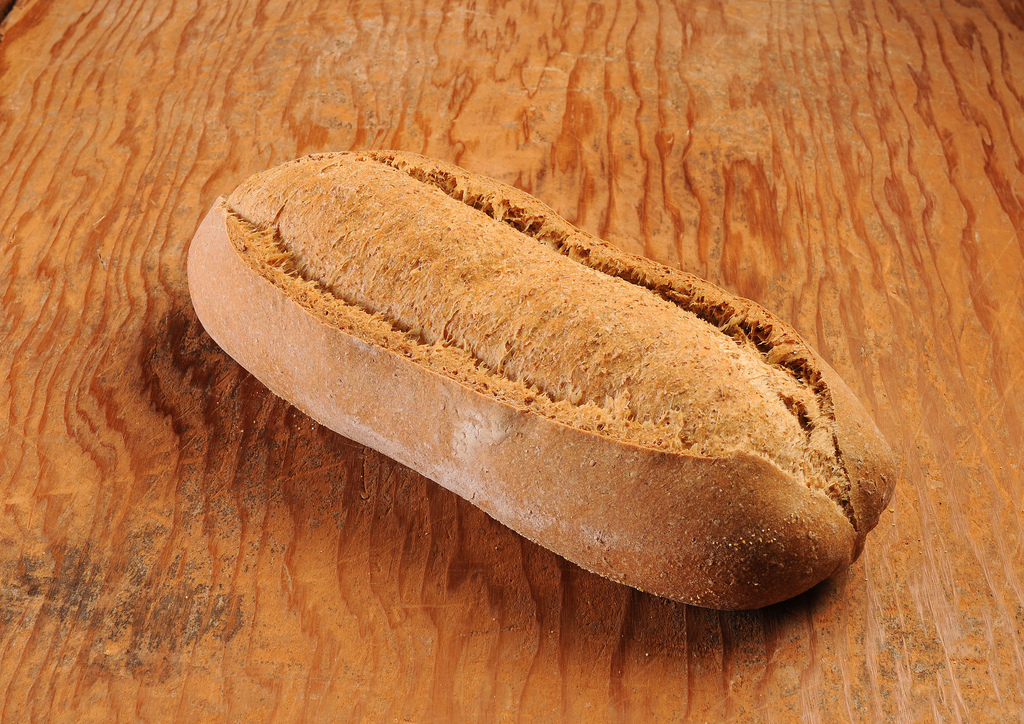Filone (Italian Yeast Bread)
A bread similar in taste and texture to the French baguette, filone is an everyday Italian yeast bread that can be purchased fresh at cafes, bakeries, and markets around the country. The name filone comes from the Italian word filo , meaning "line," in reference to its long, straight shape.
Recipe Servings: 2 loaves
Prep Time
25 minutes
+ 13 hours 40 minutes resting
+ 13 hours 40 minutes resting
Cook Time
50 minutes
Total Time
14 hours 55 minutes
Vegetarian
Vegan
Gluten Free
Dairy Free
Kosher
Halal
Ingredients
- ⅓ cup (80 ml) warm water
- ⅔ cup (80 g) all-purpose flour
- 1⅓ cups (320 ml) warm water
- 1 tsp (5 ml) active dry yeast
- 3¼ cups (390 g) all–purpose flour, plus more for dusting
- ⅓ cup (80 ml) olive oil, plus more for greasing bowl
- 2¼ tsp (11.25 ml) kosher salt
- ½ cup (120 ml) ice cubes
Directions
- Sponge:
In a medium mixing bowl, whisk together yeast and warm water. Set aside for about 10 minutes, until frothy. - Add flour to yeast mixture and mix until a smooth dough forms.
- On a lightly-floured surface, turn out dough and knead for 2 minutes, until fairly smooth.
- Transfer the ball of dough to a greased bowl and cover with plastic wrap.
- Place covered bowl in a cold oven for one hour.
- Transfer bowl to the refrigerator and leave for at least 8 hours or up to 24 hours.
- Bread:
Remove sponge from refrigerator and allow to come to room temperature, about 30 minutes. - In a large mixing bowl, combine sponge with water and yeast, stirring until it breaks up and begins to dissolve in water.
- Mix in flour, oil, and salt, stirring until a dough forms.
- Set aside and let dough rest for about 20 minutes. At this point, dough will be quite wet and sticky.
- Knead dough in bowl for about 4 minutes until it becomes elastic and smooth, but still wet.
- On a lightly-floured surface, turn out dough and continue kneading until smooth and elastic, about 6 more minutes.
- Dough will still be sticky to the touch but will release from hands fairly easily. It should also have formed a tight skin that allows it to hold its shape when stretched.
- Transfer dough ball to a lightly greased bowl and cover it with plastic wrap.
- Place bowl in a cold oven and let rest for about 2 hours, until dough doubles in size.
- Meanwhile, place a sheet of parchment paper on a rimless baking sheet and dust it with flour.
- Place dough on a lightly-floured surface and use a chef's knife to cut into 2 equal pieces.
- Flatten each piece slightly and fold top and bottom edges of one piece toward the middle and flatten dough at the seam with the palm of your hand.
- Turn dough over, seam-side down, and shape into a 12-inch (30-cm) log.
- Transfer log to floured parchment paper.
- Repeat procedure with second piece of dough.
- Lift parchment paper between loaves slightly to create an elevated divide and loosely cover dough logs with plastic wrap.
- Transfer loaves to a cold oven and let rest for about 90 minutes, until loaves double in size.
- Remove loaves from oven.
- Place a cast–iron skillet on the bottom rack of the oven and position another rack above skillet.
- On the upper rack, place a baking stone.
- Preheat oven to 425° F (220° C).
- Uncover dough logs and sprinkle tops with flour.
- Using the corner of the parchment paper as a guide, slide the loaves, still on the paper, onto the baking stone and position evenly on the stone.
- Place ice cubes in skillet in order to produce steam as loaves cook.
- Bake loaves for around 50 minutes, until they are dark golden brown.
- Remove to a wire rack and allow to cool before serving.
Copyright © 1993—2025 World Trade Press. All rights reserved.

 Italy
Italy 
